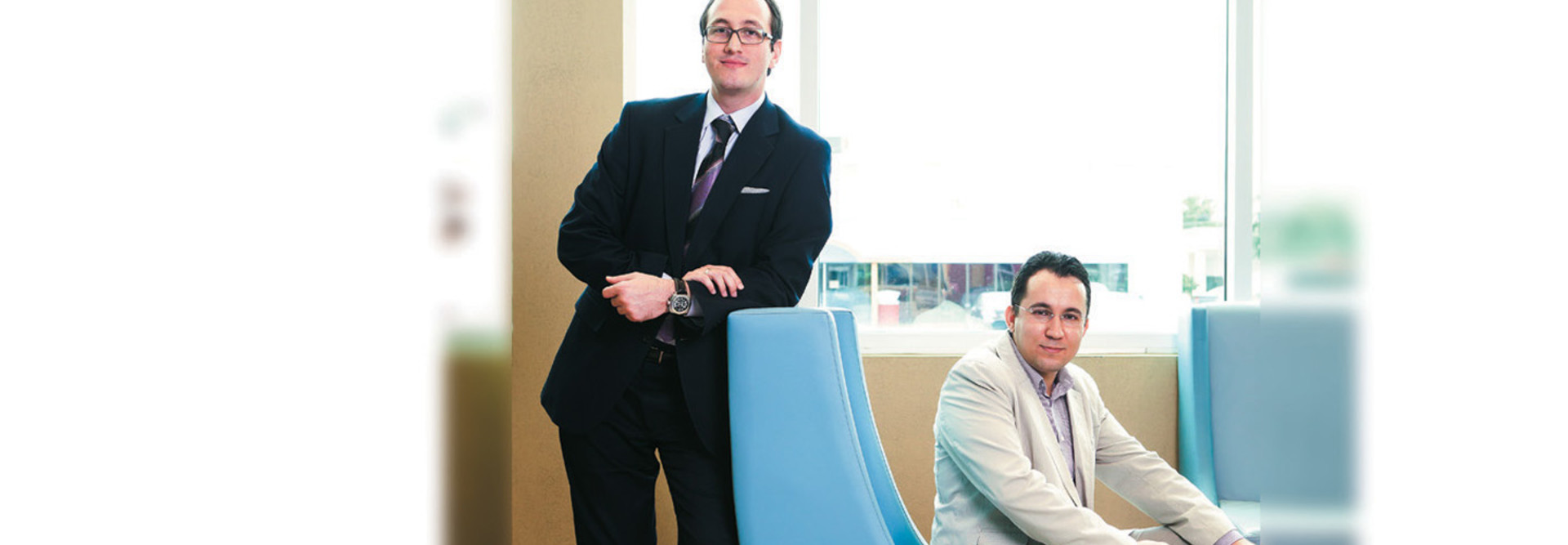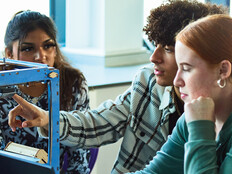How to Turn Kids into Techies
Last September, Harmony Public Schools' middle and high school students returned to class to find the familiar textbooks and whiteboards they've always seen. But each student also received a box whose contents, administrators of the Houston-based public charter school nonprofit hope, will open up the world to students and potentially lead to more of them choosing careers in science, technology, engineering or mathematics.
Inside those 15,322 boxes were new 11.6-inch Lenovo ThinkPad x131e Chromebooks: one for every middle and high school student and teacher throughout the 40-school system. For now, staff members provide the tech support. But soon, students will take over, offering both help desk services to their peers and their teachers and getting an unrivaled, hands-on education in technology before they graduate.
Harmony, which serves students from underserved communities throughout Texas, is known for its STEM-focused, project-based learning approach to instruction. A $30 million Race to the Top grant — one of just 16 awarded by the U.S. Department of Education in 2012 — has helped the organization fund those efforts.
When the grant came through in April 2013, Harmony moved quickly, with CDW•G's help, to purchase the needed Chromebooks by August. CDW•G also set up the Google management console, configured the devices to work with Harmony's domains and registered each device under its specific school so they could be delivered to students immediately, ready to use.
"We decided to go with Chromebooks because they require a lot less maintenance in terms of time and effort to set up and support,"
says Burak Yilmaz, the organization's Race to the Top project director. Schools were surveyed to assess their network infrastructure before the devices were ordered, configured and delivered to students. No further updates or configurations were needed.
Yilmaz and his colleagues are currently developing a curriculum that will integrate technical troubleshooting for the Chromebooks into learning. "Interested students will be able to take these courses and get more training" in IT management, he explains. Those students will then run help desks in select schools, providing a support function for which the IT department typically would be responsible — and gaining valuable experience that will prove useful if they eventually pursue a career in the IT field or study STEM subjects in college.
"If it goes well, we'll replicate the student-staffed help desks at all of our schools," Yilmaz says.
As envisioned, the students will function as consultants, adds Ali Kaba, Harmony's director of technology. Help desk workers will identify common issues and then develop solutions to those problems for other students and teachers to reference. "If we do have a physical desk at the schools, students will be there during dedicated hours — perhaps over lunch or after school — to assist students and staff who stop by for help resolving their issues." They will earn community service hours for their work.
The size of the team will be determined by the size of the school, they say. Initial training will come from district IT coordinators and experts, who are working on launching a virtual platform that will include video training as well.
6 The number of students in Lynbrook High School's first Virtual Vikings class
SOURCE: Lynbrook High School
Turning the Tables
Harmony's program is unique, to be sure. But other schools have been equally creative in their efforts to drive student interest in technology (and potential STEM careers after graduation).
In 2012, Angela Estrella, library media teacher for Lynbrook High School in San Jose, Calif., decided to help bridge the technology experience gap between students and teachers by developing a program she dubbed Virtual Vikings. She recruited a half-dozen students to spend their free periods working with school technology, who would then serve as assistants to teachers using those tools.
"We decided to go to the lab and experiment with what was being used on campus, and then go to the classrooms to help teachers," Estrella explains. "We quickly realized that as students started exploring the tools that we thought were helping, we'd been missing the student perspective. Tools that seemed great to teachers were actually cumbersome to students."
So Estrella organized "hackathons," in which students worked quickly to come up with solutions to IT challenges they were seeing. "It sparked their entrepreneurial interests," she says. "They want to develop tools to help teachers and students in school." She also organized field trips to local technology companies, including Facebook, to see how what they were doing might translate into career opportunities.
Her first-year Vikings wrote job descriptions for the program, and Estrella used those to recruit this year's participants. "The big takeaway for me has been that it's very important to have that student voice," she says. "When we're looking at technology adoption, students will be the end users."
In New York City, meanwhile, the Network for Teaching Entrepreneurship and New York City Economic Development Corp. teamed up to develop NYC Generation Tech (GenTech), a hands-on summer program that combines entrepreneurship and mentoring and teaches students basic coding.
Each of the 43 students who participated in last summer's program was given a notebook computer and a suite of software that included Adobe Photoshop and Microsoft Word. They completed a two-week tech boot camp and then spent six weeks working in teams on app development, giving pitches, writing business plans and coding. At the end, they pitched their programs to potential investors.
"The winning team's project emulates the classroom experience on a mobile device so students can collaborate with peers and discuss school-related topics," says GenTech Program Director Jordan Runge. "We hope to see it on Google Play in the next couple of months."
The students have continued to work on their projects since the formal program ended, he adds, which was the hope. Another group will come through this summer and have the same experience.
"Students have this great experience over the summer," Runge says. "We hope they'll continue to improve their coding skills to build a network in the tech space."
Safe Harbor for Learning
Andrew Coy, executive director of the Baltimore-based Digital Harbor Foundation, noticed a high school student hanging around the foundation's Tech Center shortly after it opened last January.
"He didn't have an answer when we asked him what he wanted to do — he just knew he liked technology," Coy recalls. "We finally handed him a 3D printer kit." The boy, named Darius, went to work, asking lots of questions and struggling to follow the kit's directions on his own. Six weeks later, he printed his first object with the 3D printer.
"There was this moment," Coy continues, "where the bag of parts became something magical. He made something that could make other things. That's a transformational moment for anyone, and for Darius, it marked the launching point for a whole new set of possibilities."
Since then, Darius has built four more 3D printers. "A year ago, he'd have never considered doing this," Coy says. "Now, he's selling his custom-printed objects and is interested in future jobs involving bio-printing."
Each semester, Digital Harbor Foundation recruits 30 inner-city high school students for a 12-week foundation course about technology. Upon completion, they are granted full access to the Tech Center after school and over the summer to experiment with technology and explore how they can turn their curiosity into a career.
"Through experiences here, students home in on what they love to make the most," Coy explains. "What we're teaching above and beyond anything else is how to learn and how to love learning. The specifics of technology are constantly changing. But if these kids are adept at figuring things out and enjoy the process of discovery and creation, they can apply that knowledge and skill set forever."








